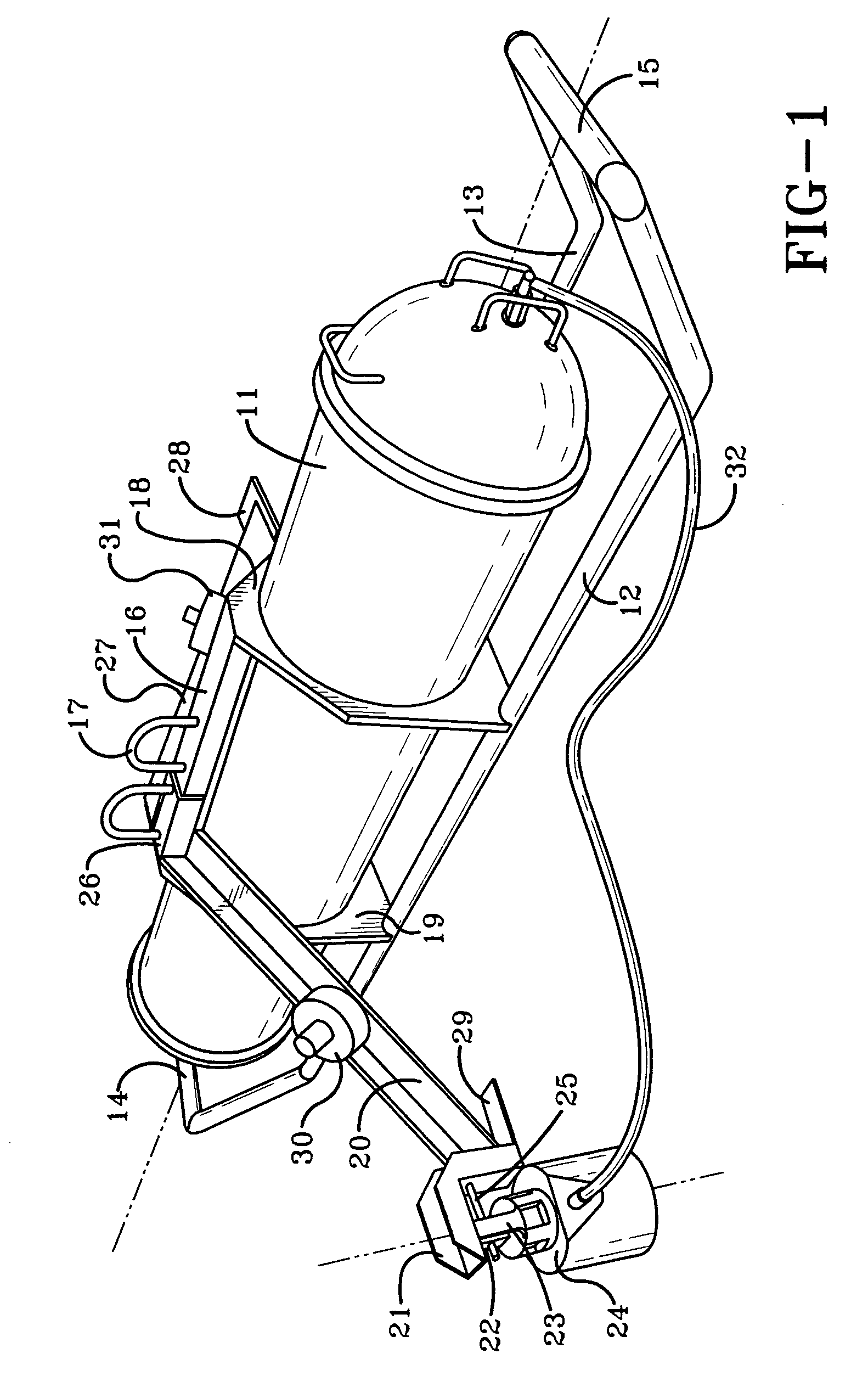Deployment of seismic sensor
a technology for seismic sensors and deployment plans, applied in the direction of measuring devices, scientific instruments, instruments, etc., can solve the problems of difficult to evaluate uneven seabeds, less effective, and seabeds may have become soft, so as to reduce the disadvantages of known equipment and methods, easy to use, and accurate
- Summary
- Abstract
- Description
- Claims
- Application Information
AI Technical Summary
Benefits of technology
Problems solved by technology
Method used
Image
Examples
Embodiment Construction
[0018]FIG. 1 illustrates a cylindrical container 11, having a longitudinal main axis, that contains registering and reporting equipment and a power supply for the operation of a submerged sensor node. The container 11 is supported by two parallel skids 12, 13, which are made of a pipe material and which have upwardly bent ends 14, 15, that are connected to each other. A yoke 16, having a lifting bow 17, is coupled to the top side of the container 11. The yoke 16 is coupled to the container 11 with rings 18, 19, which encircle the container 11 at each end of the yoke.
[0019]On one side of this structure, a carrier arm 20 extends outwardly. The carrier arm 20 has an inner end that is removably attached to the yoke 16 and an outer end that carries an outwardly extending bracket 21. At its underside, the bracket 21 has a downwardly extending releasable fastener 22 for coupling to a carrier bracket 23 located on the top of a sensor node 24. The carrier bracket 23 can be arranged for gripp...
PUM
 Login to View More
Login to View More Abstract
Description
Claims
Application Information
 Login to View More
Login to View More - R&D
- Intellectual Property
- Life Sciences
- Materials
- Tech Scout
- Unparalleled Data Quality
- Higher Quality Content
- 60% Fewer Hallucinations
Browse by: Latest US Patents, China's latest patents, Technical Efficacy Thesaurus, Application Domain, Technology Topic, Popular Technical Reports.
© 2025 PatSnap. All rights reserved.Legal|Privacy policy|Modern Slavery Act Transparency Statement|Sitemap|About US| Contact US: help@patsnap.com



